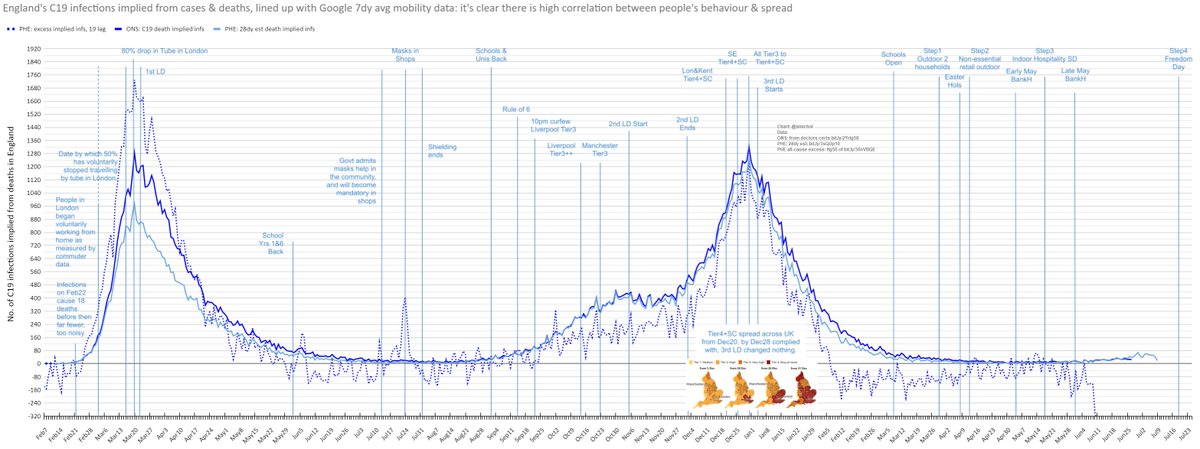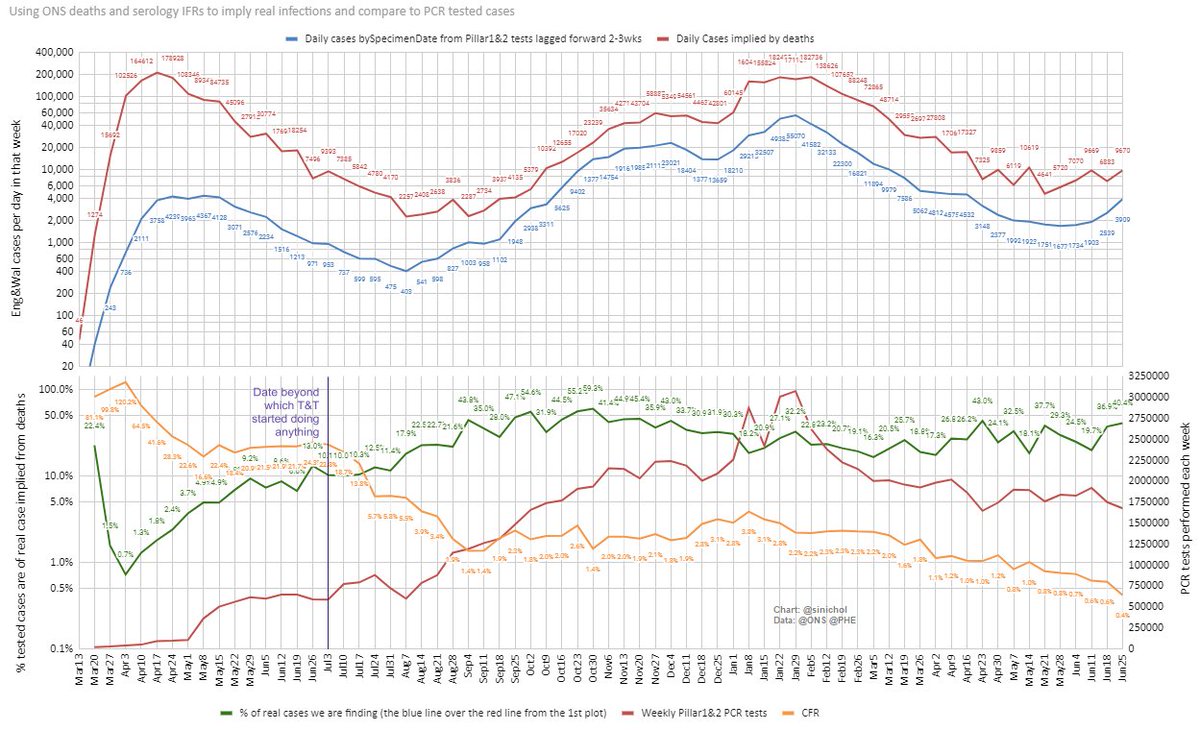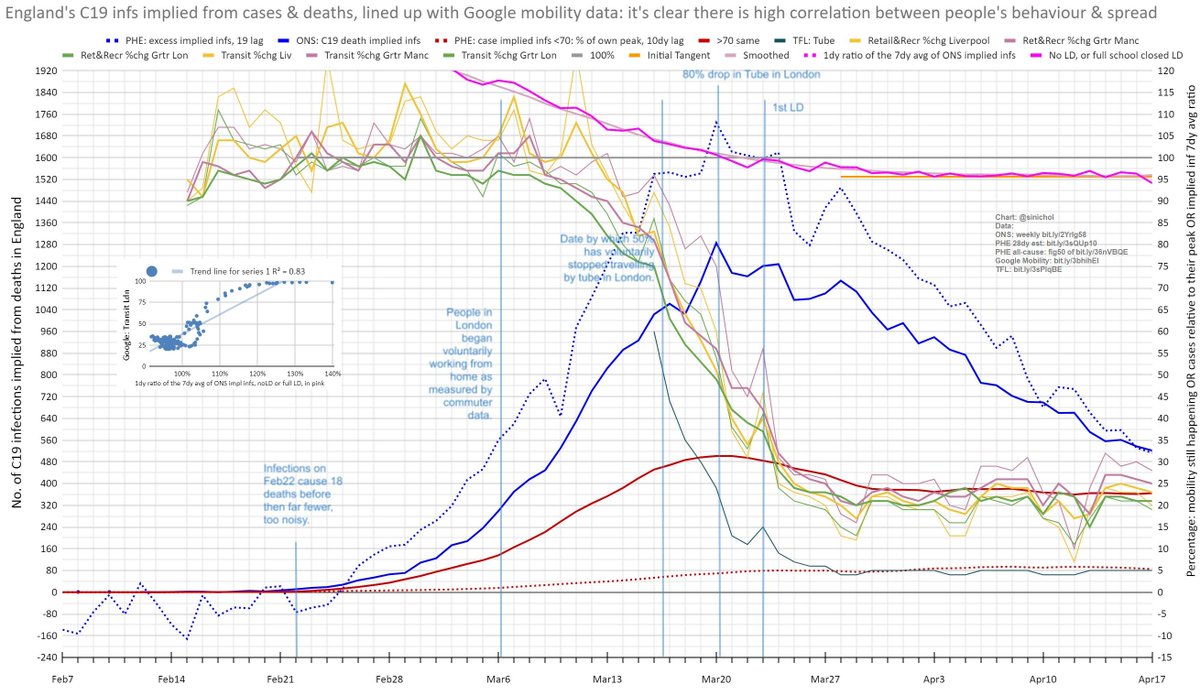
Father, quant researcher, blogger & medium editor, utilitarian, political pragmatist
How to get URL link on X (Twitter) App


 Doing so we see the popular charge that 1st/3rd🌊infs peaked before LD, and that the 2nd LD had no effect.
Doing so we see the popular charge that 1st/3rd🌊infs peaked before LD, and that the 2nd LD had no effect.


https://twitter.com/sinichol/status/1381654427602411529
 Taking each LD in turn.
Taking each LD in turn.


 Main cause, 2🔑factors:
Main cause, 2🔑factors:

 Basically, fewer >80, means they've had⏫spread, and ⏫younger deaths, but👀equal.
Basically, fewer >80, means they've had⏫spread, and ⏫younger deaths, but👀equal.


 With testing now⏫the compounding effect we missed in🥇🌊is much clearer in the🥈.
With testing now⏫the compounding effect we missed in🥇🌊is much clearer in the🥈.